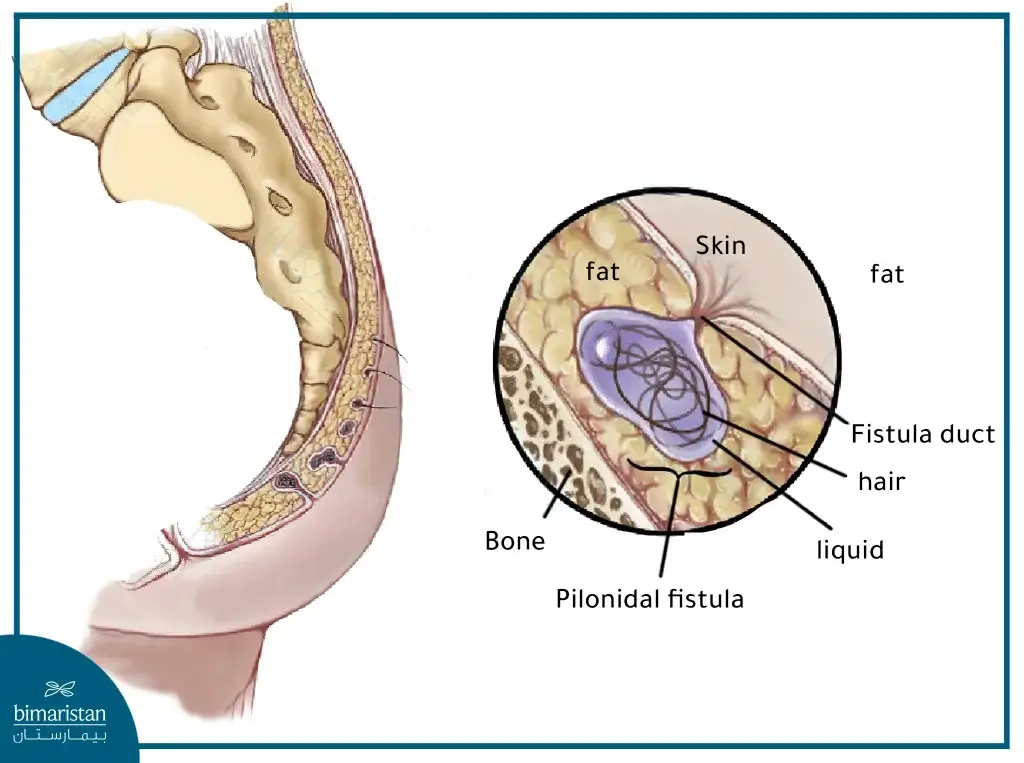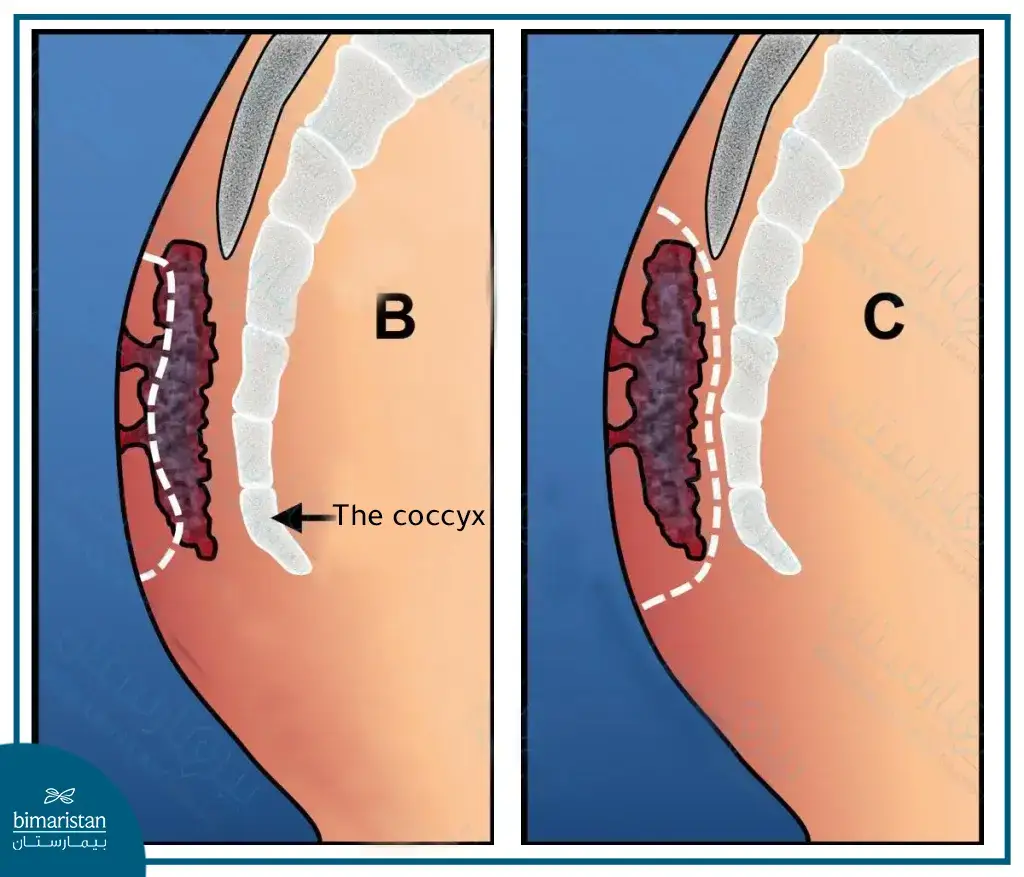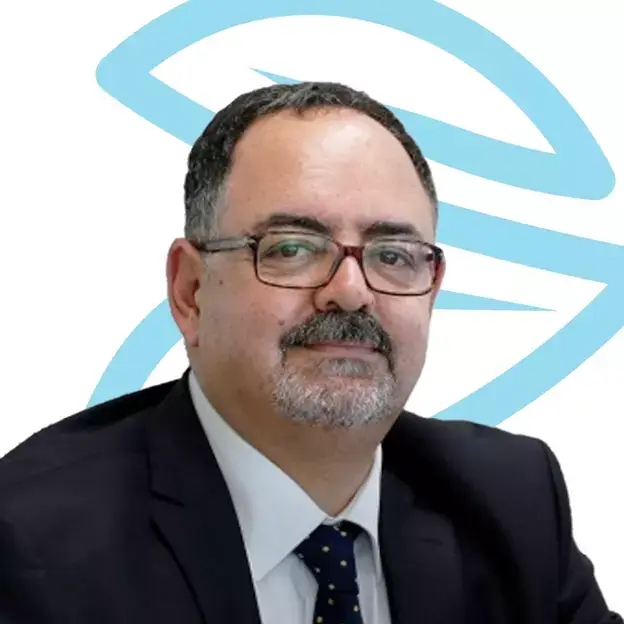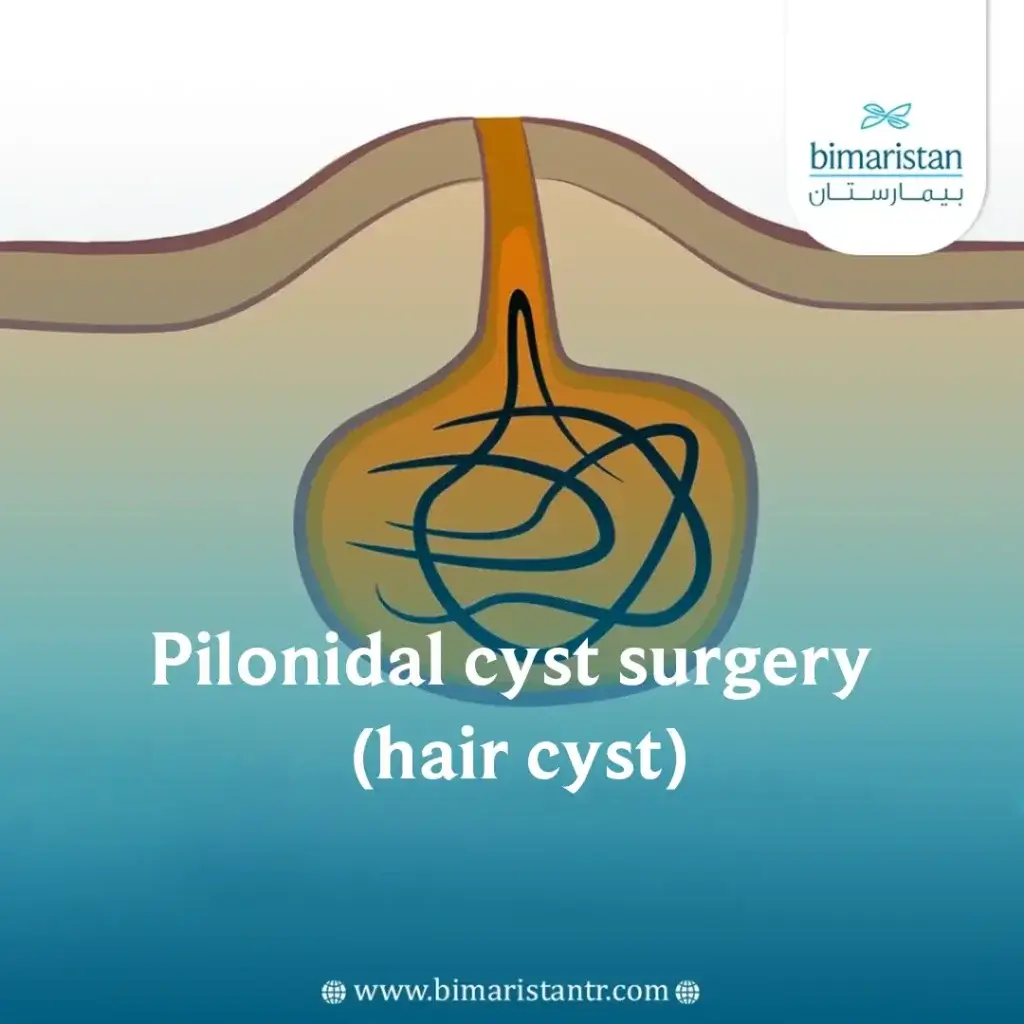The pilonidal cyst appears in young people and often tends to recur. Therefore, its treatment requires highly qualified and experienced hands to perform the pilonidal cyst surgery, which Turkish doctors provide.
What is a pilonidal cyst (hair cyst)?
It is called an anal fistula or pilonidal cyst. It is a cyst in the skin containing hair and remnants. It appears at the base of the coccyx bone at the top of the cleft between the buttocks (anal).
Doctors believed that pilonidal fistula was a congenital condition. Still, over time, it was discovered that it arises due to some hair around the soft tissue turning over and penetrating the skin. The body treats this hair as a foreign body, leading to a hair cyst (pilonidal fistula). The occurrence of noticeable skin thickening.

A pilonidal cyst usually affects men 2.2 times more often than women and often appears before the age of 40 (20-30).
A pilonidal cyst can become infected, become very painful, and may reach a severe stage in which it does not respond to treatment with antibiotics or other initial treatments.
High-risk patients, such as truck drivers, office workers, and cyclists, sit for a long time without moving.
Some patients can develop pilonidal cysts in various places, such as the fingers of barbers and sheep and cow breeders.
Pilonidal cyst symptoms
If the cyst is not infected, then in most cases, there are no symptoms, or there may be slight discomfort when sitting in the same place as the fistula or inflammation of the fistula. However, in the case of infection, what is known as a pilonidal abscess is formed, and the pilonidal abscess manifests itself with the following symptoms:
- Redness of the skin
- the pain
- Pus leaking from the fistula
- Foul odor due to pus
- Fever
Pilonidal cysts must be treated quickly. Otherwise, the condition will worsen or even develop (even if only to a small degree) into squamous cell carcinoma (SCC).
Preparations before pilonidal cyst surgery
Patients will undergo a physical examination by the surgeon to discuss symptoms and determine the appropriate surgical treatment. Preparations vary depending on the type of pilonidal sinus surgery performed. Routine blood tests are usually not needed but may be ordered before surgery based on the patient’s age and the presence of any medical problems. They may be requested. Patients are advised to stop taking certain medications before surgery.
The doctor usually asks the patient to stop eating 8 hours before the operation
What types of pilonidal cyst surgery are common in Turkey?
Turkey has two common methods for pilonidal cyst surgery (pilonidal fistula). Still, other methods are being studied, whether surgical or not, as their effectiveness in treating without complications and preventing the recurrence of pilonidal fistula has increased in Turkey. Recently, the recovery rate from pilonidal cysts has increased due to the development of Surgical methods with doctors’ competence.
Pilonidal sinus surgery (incision and drainage)
It is a small surgery performed in the doctor’s office under local anesthesia (local anesthesia is sufficient here). It is recommended for patients with a pilonidal sinus for the first time, and the infection is often minor.
The doctor makes an incision in the pilonidal fistula through which the fluid and pus are drained. Then, he places cotton and gauze in the wound and leaves it open until the pilonidal fistula heals and disappears (the tampon must be constantly changed from gauze or cotton). This is called the open wound method, which has better results in preventing pilonidal sinus recurrence.
The doctor can close the wound and sew it up. This method is a closed wound, but the risk of recurrence in this method is high.
After this procedure, it is recommended that the patient remove hair either by shaving or laser around the cyst area (lower back) to reduce the recurrence rate.
Pilonidal cyst surgery (cyst resection)
Suppose the patient with a pilonidal cyst had previously been incised and drained and had problems. If the infection is very bad, or the patient has several pilonidal cysts accompanied by pilonidal fistulas, then pilonidal cyst surgery becomes necessary. We need more effective treatment and a larger Pilonidal cyst removal surgery.
Pilonidal sinus surgery is a procedure that takes place outside the clinic and in the hospital’s operating room. The pilonidal cyst surgery is performed by a specialized surgeon, and the patient often stays for one night in the hospital. The patient is given general anesthesia or regional anesthesia of the lower part of the body (general anesthesia is better).
After that, the surgeon makes a surgical incision and removes a specific amount of tissue (based on the depth of the cyst and the number of fistulas) around the fistula. Then, he removes the fistula itself. We can resort to the open or closed surgical method as in the previous operation.

The wound must be carefully cared for until it heals; otherwise, the infection will return after a few days, and the fistula will recur. The doctor’s or nurse’s instructions must be followed completely for fear of what we mentioned happening.
Other operations
Other methods that are less invasive than previous methods for treating pilonidal sinus are currently being studied, and studies have shown the effectiveness of these methods in treating pilonidal sinus (hair cyst), such as (video-assisted pilonidal sinus excision or laparoscopic pilonidal sinus excision).
Complications of pilonidal cyst surgery
Pilonidal cyst surgery, with the abovementioned methods, is considered a safe procedure. We hardly see complications from the cyst surgery except perhaps pain, which is normal and varies according to the case. However, the matter is not without some complications.
Other complications may arise due to the recurrence of infection in the fistula and lack of good wound care, and the symptoms of infection in the fistula are the same as those mentioned previously in the article.
Pilonidal cyst surgery is highly reversible if it is not managed properly, and we may need several surgeries to get rid of the pilonidal cyst completely.
Treating pilonidal cyst at home
Home treatment is a relative matter. What works for one patient may lead to serious complications for another. Therefore, the Bimaristan Center advises against randomly taking prescriptions from the Internet without medical advice.
Pilonidal cysts can be treated at home through several traditional, non-surgical methods. Still, this treatment remains symptomatic and may not be a complete cure or lead to the complete disappearance of symptoms. Some prescriptions may also increase symptoms instead of alleviating them. The success of a treatment method for one person does not necessarily mean the success of this method for another patient or all patients.
Among these home treatment methods are:
- Hot compresses: Hot compresses several times a day can help soothe inflammation. The heat emanating from the compress allows the pus to drain from the pilonidal cyst (pilonidal sinus) and thus relieve pain.
- Aloe Vera oil: It contains anti-inflammatory and antibacterial properties that can help relieve symptoms.
- Internationally approved anti-inflammatory creams.
- Shaving hair in the pilonidal fistula area.
- Clean the fistula area regularly.
Recovery after a pilonidal cyst surgery
The recovery period from the surgery varies depending on the type and method (i.e., whether the wound is left open or closed). The healing process usually takes about a month or two (the recovery period is longer in the case of an open wound).
The doctor can prescribe pain-relieving medications or some special baths for the wound, and he may prescribe some antibiotics to ensure that the infection heals and does not return.
Most patients can return to work the day after the surgery. Still, some activities must be avoided until the condition is completely healed, and instructions and doctor’s advice must be followed to ensure no relapse. These activities and instructions include:
- Avoid doing stressful work.
- Avoid sitting for long periods.
- Avoid riding a bike.
- Weight loss in obese patients.
- Shave the area constantly, either by shaving or using a laser, and constantly clean the area, especially the wound opening.
Sources:

